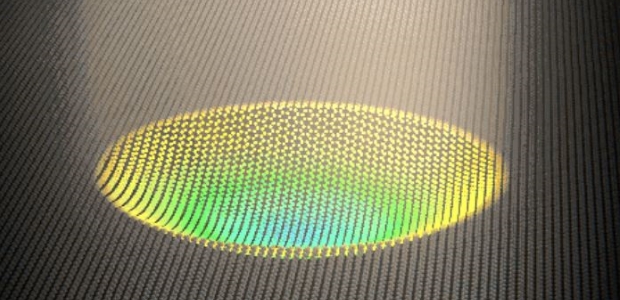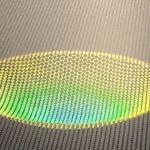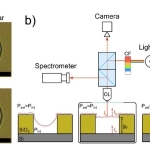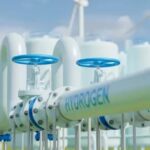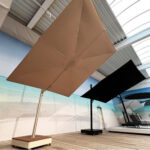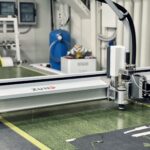Researchers from Delft University of Technology in the Netherlands have discovered what could one day be a new type of display technology: bubbles of graphene that change color as they expand and contract. Scientists say that these ‘mechanical pixels’ could eventually make screens that are more flexible, durable, and energy efficient than current LED technology. They caution, though, that the work is very much in its infancy; whether these graphene bubbles can make displays of equivalent quality, or be scaled up for mass production, remains to be seen. The discovery was made by researchers working with panels of silicon oxide covered with graphene — sheets of pure carbon just a single atom thick (scientists are still working on commercial applications for it). The silicon is pockmarked with holes about ten times the width of a human hair, leaving the graphene stretched across these tiny cavities like a drum. When working with these samples, scientists noticed that the bubbles of graphene changed color depending on the pressure inside the cavities. When the pressure shifts, the bubbles became concave or convex, changing how light refracted through them and creating different colors. “Graphene in principle is transparent; it’s so thin that light doesn’t get reflected,” researcher Santiago Cartamil-Bueno told The Verge. “But we were using a double layer of graphene, and that reflects more.” As the bubbles of graphene inflate or deflate, light has to travel different amounts before it hits the back of the silicon cavity. This changes which part of the light spectrum is absorbed, and which part is reflected back, altering the colors of the bubbles. “Depending on the depth of the cavity you have different interference, and from this you get different colors of light,” says Cartamil-Bueno. This is the same principle used in Qualcomm’s Mirasol technology, which uses reflective membranes controlled using electrostatic. As with E Ink screens, these sorts of display are very energy-efficient, as once an image has been ‘set’ it takes no additional power to maintain it. But, the way they’re made makes backlighting impossible. You can’t read these screens in a dark room, and they look their best in bright sunlight.
The challenges facing the graphene technology are manifold. For a start, the color changes have only been observed under a microscope so far, because it is difficult and expensive to manufacture these graphene samples at a greater size. The resulting ‘pixels’ are so small, that hundreds of thousands would be needed to create even a tiny image, and the bubbles can’t be made bigger for fear they would burst. Secondly, the Delft researchers have yet to work out how to create pure colors from the graphene bubbles. “I have seen the whole rainbow of colors, it’s quite a natural effect,” says Cartamil-Bueno. “But you cannot get clean colors like pure red or pure blue.”
The next step for researchers is figuring out how to accurately control the pressure changes in individual cavities. Although work on this topic has yet to be published, Cartamil-Bueno says his team has worked out, in principle, how to control this electrostatically — the same method used by Mirasol screens. Like Mirasol, the resulting displays would only work in sunlight (there’s no way to backlight them), but using graphene would make them extremely lightweight and flexible. Cartamil-Bueno says Delft is currently working on prototypes, and hopes to have a screen ready to show off at the Mobile World Congress tech conference in March 2017.
Caption picture Nr.1
A technical diagram showing how layers of graphene are stretched over silicon oxide cavities
Caption picture Nr.2
An artist’s impression of the graphene pixel. Image credit: Delft University


